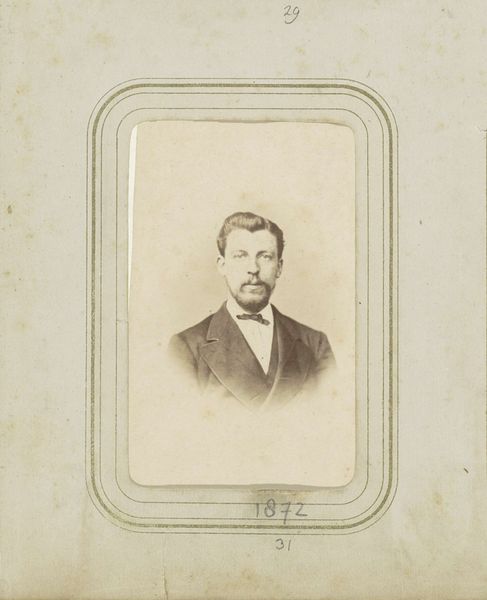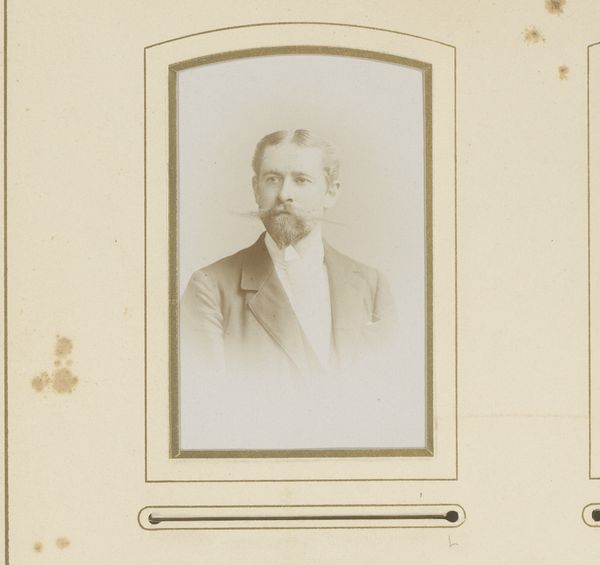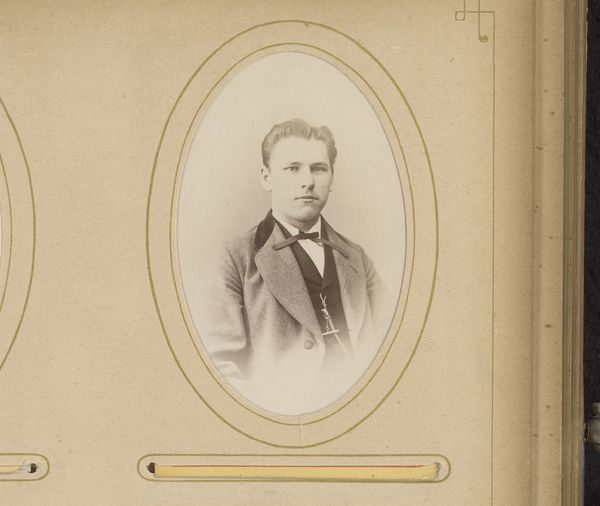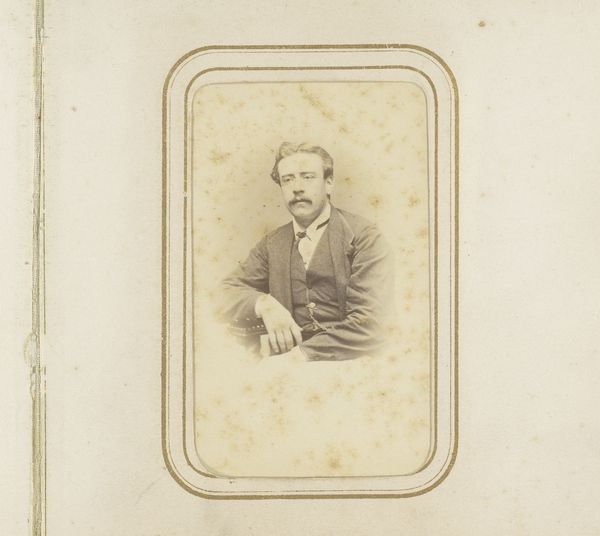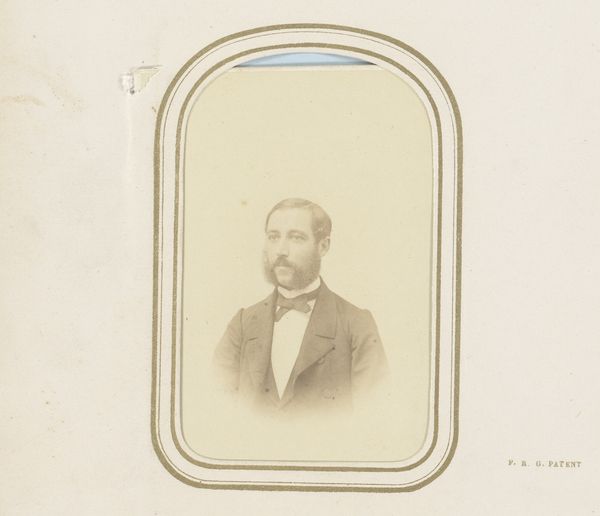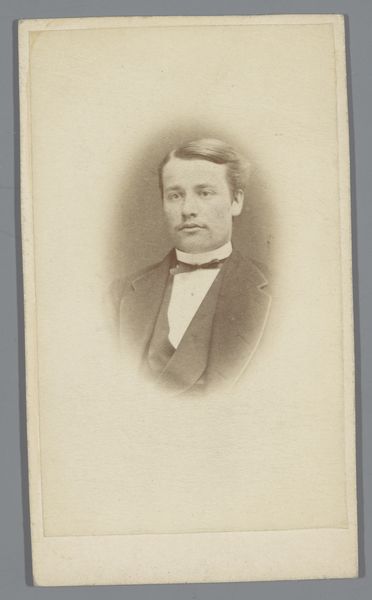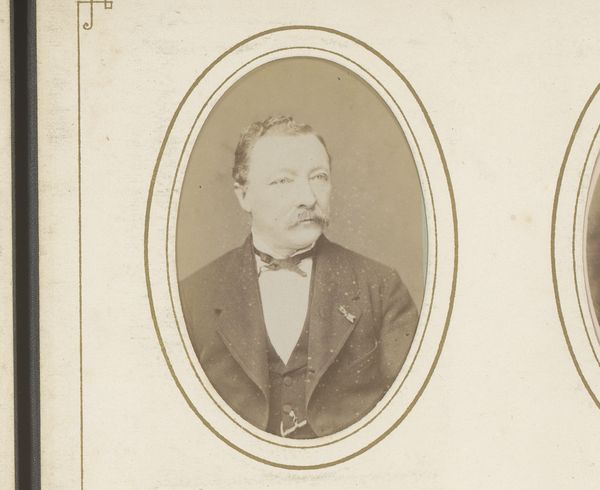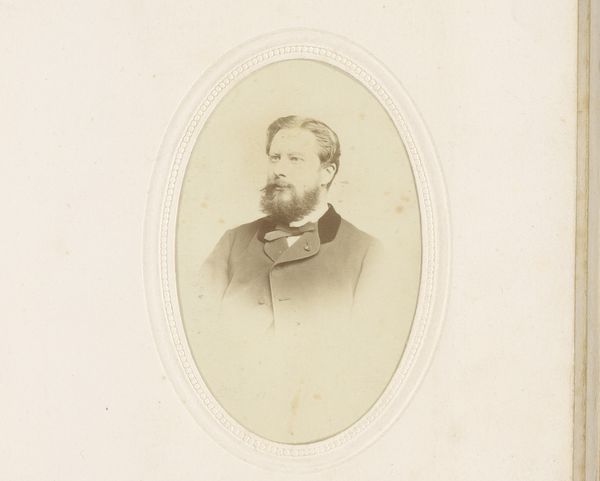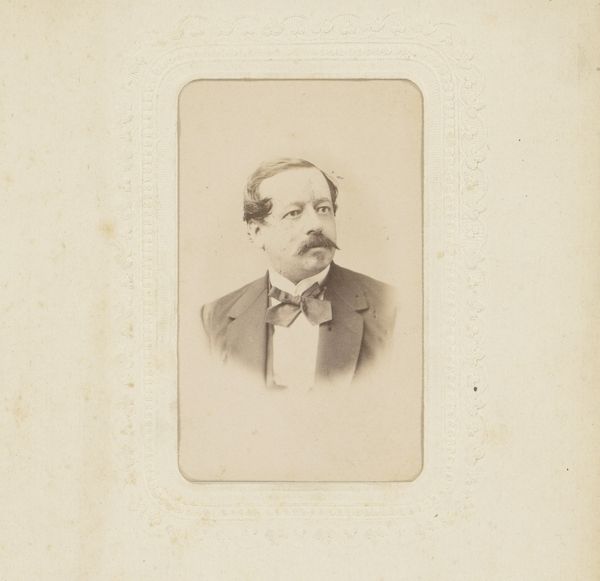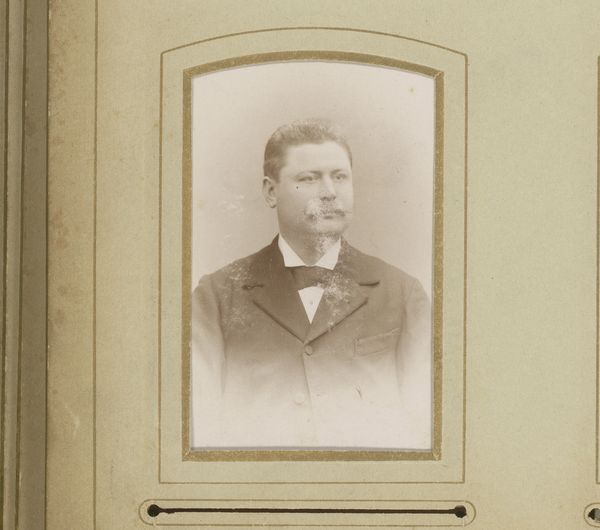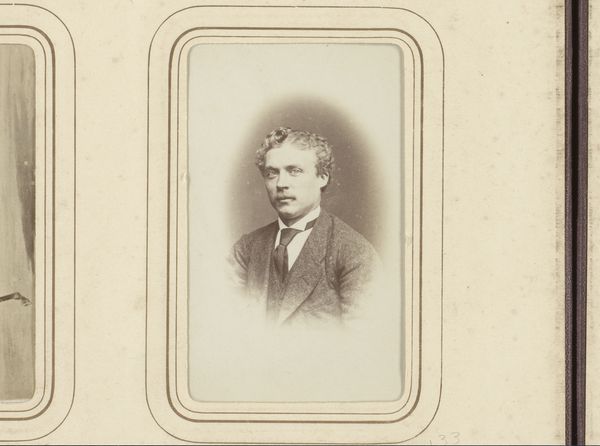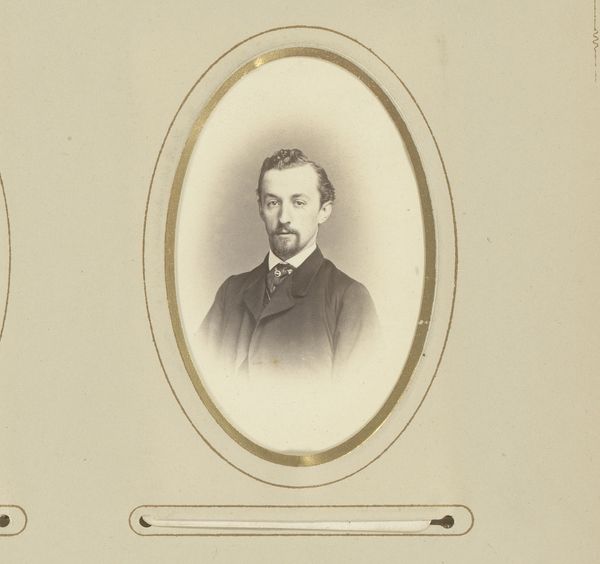
photography, gelatin-silver-print
#
portrait
#
photography
#
historical photography
#
gelatin-silver-print
#
19th century
Dimensions: height 92 mm, width 56 mm, height 100 mm, width 61 mm
Copyright: Rijks Museum: Open Domain
Editor: Here we have "Portret van een man met een snor," a gelatin silver print by Woodbury & Page, dated somewhere between 1857 and 1880. The monochrome really amplifies the subject's stern expression and his neatly kept attire. How would you interpret the composition of this piece? Curator: Note the sitter's careful placement within the frame, nearly symmetrical and balanced. The subtle tonal gradations within the photographic print provide depth and texture, highlighting the form of the face and the fabric of his garments. The light, coming presumably from above, sculpts the features. Observe, too, the geometric framework of the printed mount around the photographic image itself—a key structural element. What function do you ascribe to its multiple borders? Editor: They do draw my eye inward! Is that intentional? To create an intimacy between the viewer and the subject? Curator: Indeed. Consider the interplay of the lines. They guide the eye from the exterior to the primary subject. The framing is essential; removing them flattens the overall effect and diminishes its inherent power. Even the sepia tonality is far from arbitrary, providing unity through monochromatic scale. Does the relationship of light and shadow evoke a particular mood? Editor: There’s a gravity to the limited palette, and also the way the light carves the features. It is a fairly sober mood overall. It focuses attention on details of form and the sitter’s direct gaze, devoid of extraneous ornamentation. Curator: Precisely. And by focusing solely on form and light, we see the image as a unified system where each element, tone, line and plane contributes to the construction of its meaning. Editor: It's amazing to consider each detail so intently. I’ll certainly look closer next time. Curator: An analytical mindset expands our understanding and appreciation, not just historically, but also visually.
Comments
No comments
Be the first to comment and join the conversation on the ultimate creative platform.
